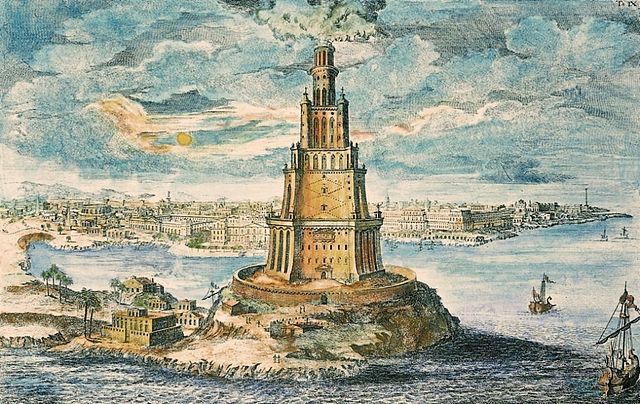The depths of the ocean hold many mysteries, but one creature in particular has captured the imagination of scientists and storytellers alike – the giant squid. This elusive and enigmatic creature has fascinated people for centuries, with its massive size and deep-sea habitat shrouded in mystery.
In this article, we will dive into the untold story of the giant squid – its physical characteristics, behaviors, and interactions with humans. From the challenges of studying this creature to the impact of human activities, we will explore the fascinating world of the giant squid and shed light on the myths and legends surrounding it.
Join us on this journey into the deep as we uncover the secrets of the elusive giant squid.

OLYMPUS DIGITAL CAMERA
Discovering the Giant Squid
The giant squid, also known as Architeuthis, has long captured the imagination of humans with its mysterious and elusive nature. This deep-sea creature, found in the remote depths of the ocean, has been the subject of numerous legends and myths throughout history. But it wasn’t until recent advancements in technology and scientific research that we have begun to unravel the untold story of this enigmatic creature.
Physical Characteristics and Size:
The giant squid is known for its colossal size, with the largest recorded specimen measuring a whopping 43 feet in length. Its body is covered in a reddish-brown skin, with large, protruding eyes and eight long arms lined with powerful suckers. It also has two long tentacles, which can reach up to twice the length of its body. These physical characteristics make it an intimidating and formidable creature of the deep.
Challenges of Studying and Observing:
Studying and observing the giant squid is no easy feat. Due to its deep-sea habitat and elusive behavior, it has been a challenge for scientists to gather information about this creature. The first video footage of a live giant squid in its natural habitat was not captured until 2012, with previous encounters only being of dead or dying specimens washed up on shore. The extreme depths at which the giant squid lives, along with its ability to quickly retreat into the darkness, has made it difficult to study and observe in its natural environment.
Advancements in Technology:
Despite the challenges, advancements in technology have greatly aided in the discovery and study of the giant squid. One significant breakthrough was the development of deep-sea submersibles and underwater cameras, allowing researchers to explore the depths of the ocean and capture footage of the giant squid in its natural habitat. Additionally, DNA analysis has provided valuable insights into the genetic makeup of the giant squid, furthering our understanding of this elusive creature.
Habitat and Behavior:
The giant squid is a deep-sea dweller, with its natural habitat being the dark and cold depths of the ocean. With its large eyes and bioluminescent organs, it is adapted to thrive in this environment. It is a solitary creature, only coming together to mate, and it is known to be a fierce predator. Its long tentacles and powerful suckers are used to catch prey such as fish and other deep-sea creatures.
Interesting Facts:
The giant squid is also known for its unique behaviors and adaptations. It has the ability to change color and even create blinding flashes of light to confuse its predators. It can also release a cloud of ink as a defense mechanism, allowing it to escape from potential threats.
Habitat and Behavior
The deep ocean is a vast and mysterious realm, and it is home to some of the most fascinating creatures on the planet. Among these hidden inhabitants is the giant squid, a creature that has captured the imagination and curiosity of humans for centuries. In this section, we will delve into the natural habitat and behavior of the elusive giant squid.
The giant squid is a cephalopod, meaning “head-footed” in Greek, and is a member of the Architeuthidae family. It is one of the largest invertebrates, with some individuals growing up to 43 feet in length and weighing over a ton. These massive creatures live in the deep, dark waters of the ocean, usually at depths of 1,000 to 3,000 feet, making it challenging to study and observe them.
Their deep-sea habitat presents numerous challenges to researchers, including extreme pressure, lack of oxygen, and low temperatures. As a result, sightings and encounters with live giant squids are rare, and much of what we know about their behavior is based on observations of dead or injured specimens that have been brought to the surface. However, with the advances in technology, such as deep-sea submersibles and remotely operated vehicles (ROVs), scientists have been able to gain more insights into the world of the giant squid.
One of the most distinctive features of the giant squid is its large, bulbous head, which contains its three hearts, beak-like mouth, and two beady eyes. It also has eight arms and two longer tentacles, lined with hundreds of suction cups, which it uses to capture prey and defend itself. These impressive arms and tentacles are also equipped with sharp, rotating hooks, making them formidable predators in the deep ocean.
The giant squid is a highly adapted creature, designed for survival in its harsh environment. Its skin is covered in chromatophores, which allow it to change color and blend in with its surroundings, making it difficult for predators to spot. It also has the ability to eject a cloud of black ink to confuse and deter predators, a defense mechanism shared by other cephalopods.
In terms of behavior, the giant squid is known to be a solitary creature, only coming together during mating season. They are also active hunters, using their long tentacles to reach out and grab prey, which can range from small fish and shrimp to other squid and even small whales. Scientists have also observed another unique hunting behavior in which the giant squid will use its tentacles to create a “net” to trap its prey.
When it comes to reproduction, the giant squid’s mating habits are still largely a mystery. It is believed that they have a short lifespan of only 3-5 years, and reproduction may only occur once during that time. Males use their specialized tentacles, called hectocotylus, to transfer sperm into the female’s mantle, where the eggs are stored and fertilized. The female then releases the fertilized eggs into the water, where they will hatch into larvae and begin their journey to adulthood.
Despite its elusive nature, the giant squid has had some documented encounters with humans. In 2004, a team of researchers filmed a live giant squid for the first time, and in 2019, a giant squid was captured on video for the second time. These sightings have increased public interest and awareness of this incredible creature. However, human activities, such as overfishing and pollution, are also threatening the population of the giant squid and other deep-sea creatures.
Feeding and Predation
The giant squid, with its massive size and elusive nature, has captivated the minds of researchers and the general public alike. However, one of the most intriguing aspects of this creature is its feeding and predation habits. As a deep-sea creature, studying the feeding behavior of the giant squid is no easy feat. But with advancements in technology and new discoveries, we have been able to gain some insight into this enigmatic creature’s diet and unique hunting abilities.
Diet:
The giant squid is a carnivorous predator, and its diet mainly consists of fish and other cephalopods such as smaller squids and octopuses. However, due to the depths at which they live (up to 3000 feet below the surface), their exact feeding habits have been a mystery. It was previously believed that the giant squid was a slow-moving scavenger, feeding on carcasses that fell to the ocean floor. But recent studies have shown that this is not the case.
Hunting and Prey:
Thanks to advancements in deep-sea exploration technology, we now know that the giant squid is an active predator, using its powerful tentacles and sharp beak to capture and kill its prey. Their tentacles, which can grow up to 10 meters in length, are equipped with sharp serrated suckers that allow them to grip and immobilize their prey. The giant squid’s beak, made of chitin, is the only hard part of its body and is used to tear apart its prey.
The giant squid’s hunting technique involves stealth and surprise. Using its large eyes, which are the size of dinner plates, it can spot prey from a distance. It then uses its bioluminescence to lure its prey close by mimicking the appearance of a smaller squid or fish. Once the prey is within reach, the giant squid strikes with incredible speed, using its powerful tentacles to wrap around its victim and bring it closer to its beak for the final kill.
Defense Mechanisms:
The giant squid is not only a skilled hunter but also a formidable defender. One of its most unique defense mechanisms is the ability to release a cloud of ink when threatened, creating a distraction and allowing it to escape. It also has the ability to change color and texture, camouflaging itself against its surroundings. These adaptations make it difficult for predators to spot and catch the giant squid.
Predators:
Despite its impressive defense mechanisms, the giant squid does have some natural predators. Sperm whales are known to be its main predator, with scars on whales’ bodies providing evidence of their encounters with giant squids. Other potential predators include deep-sea sharks and possibly other giant squids. However, due to the limited information on the giant squid’s behavior and habitat, the full extent of its predators is still unknown.

Reproduction and Life Cycle
The giant squid is a fascinating creature not only for its enormous size and elusive nature, but also for its unique reproductive process and life cycle. Despite being a well-known deep-sea creature, there is still much to learn about the giant squid’s reproductive habits. In this section, we will delve into the mysterious world of giant squid reproduction and explore their life cycle from birth to adulthood.
The Reproductive Process:
The giant squid has a complex reproductive process that often takes place in the deep ocean, making it difficult to observe. Female giant squids typically lay thousands of eggs at a time, which are then fertilized by the male’s sperm. The fertilized eggs are enclosed in a gelatinous mass and attached to the ocean floor or floating debris. This protects the eggs and provides them with necessary nutrients as they develop.
Interestingly, the female giant squid has a unique reproductive organ known as the spermatheca. This organ allows the female to store sperm from multiple males, which can then be used to fertilize multiple batches of eggs. This increases the chances of successful reproduction and genetic diversity within the species.
The Life Cycle:
The life cycle of the giant squid is divided into three stages: hatchling, juvenile, and adult. After the eggs hatch, the tiny hatchlings, known as paralarvae, are only a few millimeters in size. They have a transparent body and are unable to survive on their own. The paralarvae feed on plankton and gradually grow in size as they develop into juveniles.
As juveniles, the squid begin to develop their characteristic tentacles and beak. They also increase in size and become more independent. At this stage, they start to hunt and feed on small fish and crustaceans. As they continue to grow and mature, they reach adulthood and can reach lengths of up to 43 feet.
Challenges in Studying Reproduction:
Studying the reproductive habits of the giant squid has been a challenging task due to the deep-sea environment in which they live. The lack of natural lighting and extreme pressure make it difficult to observe and collect data on the squid. Additionally, the short lifespan of the giant squid (only 5-7 years) adds to the challenge of studying their reproductive cycle.
Despite these challenges, researchers have made some significant discoveries about the giant squid’s reproductive process in recent years. For example, in 2012, a team of scientists were able to capture the first footage of a giant squid mating in its natural habitat, providing valuable insights into their mating behavior.
Human Encounters
The giant squid has always been a fascination for humans, and there have been documented encounters and interactions between humans and this elusive creature. These encounters have given researchers and scientists a valuable opportunity to study and learn more about the giant squid.
One of the most famous encounters with a giant squid took place in 2006, when a group of Japanese scientists and filmmakers captured the first-ever footage of a giant squid in its natural habitat. The footage was captured using a deep-sea submersible with a special camera and light system designed to attract the giant squid. This groundbreaking footage gave the world a glimpse into the mysterious world of the giant squid and sparked even more interest and research into this enigmatic creature.
In 2019, another significant encounter took place when a team of researchers from the National Oceanic and Atmospheric Administration (NOAA) captured a juvenile giant squid in the Gulf of Mexico. This encounter provided valuable information about the size and behavior of juvenile giant squid, which was previously unknown due to the challenges of studying these creatures in their natural habitat.
While these encounters have shed light on the giant squid, they also highlight the impact of human activities on this species. Due to its slow reproductive rate and vulnerability to environmental changes, the giant squid population is at risk. Overfishing and pollution have affected the giant squid’s natural habitat, and efforts are being made to protect and conserve this species.
In addition to scientific encounters, there have also been documented interactions between humans and giant squid in the form of legends and myths. In ancient times, sailors often reported seeing giant tentacled creatures attacking their ships, leading to the myth of the Kraken. These stories were later attributed to the giant squid, and their appearance in various cultures has made them an important symbol in literature and art.
The cultural significance of the giant squid can also be seen in the Maori culture, where the giant squid is known as “te aka o te moana” or the “arm of the sea.” In Maori mythology, the giant squid is a powerful and respected creature, symbolizing strength, adaptability, and survival in the harsh ocean environment.
Despite the advancements in technology and increased knowledge about the giant squid, there are still many unanswered questions about this creature. Researchers continue to study and learn more about the giant squid’s behavior, reproductive habits, and population in hopes of understanding this enigma of the deep sea.
The Enigma of the Giant Squid
The giant squid has captured the imagination of humans for centuries, and with good reason. This elusive creature, with its massive size and mysterious behavior, has remained a source of fascination and wonder for scientists and the public alike. While we have made great strides in understanding the giant squid, there are still many unanswered questions and myths surrounding this deep-sea enigma.
Throughout history, the giant squid has been depicted as a fearsome monster, lurking in the depths of the ocean and attacking ships. These tales, often exaggerated and sensationalized, have only added to the mystery surrounding this creature. It wasn’t until the late 19th century that the first scientific observations of a giant squid were made, dispelling many of these mythological beliefs.
Despite our advancements in technology and understanding of the deep ocean, the giant squid remains a difficult creature to study. This is due in part to its natural habitat at depths of up to 3,000 feet, making it challenging and expensive to conduct research. Additionally, the giant squid is an elusive and solitary creature, making it difficult to track and observe in its natural environment.
One of the most intriguing features of the giant squid is its size. With an average length of 33 feet and the potential to grow up to 43 feet, it is the largest invertebrate on Earth. Its massive size is attributed to its rapid growth rate, with some individuals reaching over 2,000 pounds in just three years. However, due to its deep-sea habitat, the giant squid remains a mysterious creature, and we have yet to capture footage of a live giant squid in its natural environment.
But what makes the giant squid truly enigmatic is its behavior. With limited observations, scientists have discovered that the giant squid is a highly intelligent and adaptable creature. It uses a variety of strategies to defend itself, including releasing ink to disorient predators and even changing its color and shape to blend in with its surroundings. This ability to camouflage itself is a crucial adaptation for survival in the deep ocean.
The giant squid’s diet also adds to its enigmatic nature. While we know that it primarily feeds on fish and other squid, there have been reports of giant squid with remains of sperm whales in their stomachs. This has led to speculation that these massive creatures may also prey on whales, but this has yet to be confirmed.
Despite our limited knowledge, we do know that the giant squid has a relatively short life span, with most individuals living for only 3-5 years. This, coupled with its solitary nature, makes it a difficult creature to study in terms of its reproductive and social behaviors. However, research has shown that the giant squid has a unique reproductive process, with males using specialized tentacles to insert sperm into the female’s body, rather than direct mating.
In recent years, there have been numerous documented and even filmed encounters between humans and giant squid. These interactions have shed light on the behavior and biology of these creatures, but also raise concerns about their conservation. Human activities such as deep-sea fishing and ocean pollution pose a threat to the giant squid’s population, making it all the more important to study and protect this elusive creature.
The giant squid’s enigma continues to captivate us, and researchers are constantly pushing the boundaries to uncover its secrets. With ongoing studies and advancements in technology, we are slowly piecing together the untold story of this mysterious creature. As we continue to learn more about the giant squid, we must also strive to protect its habitat and ensure its survival for generations to come.
























